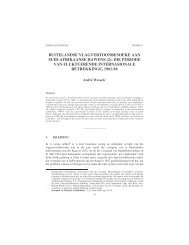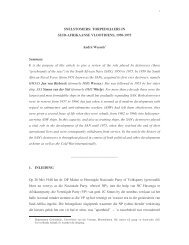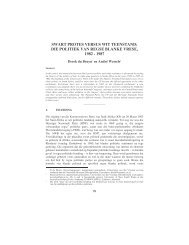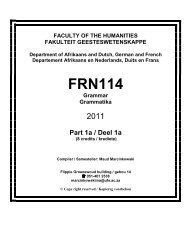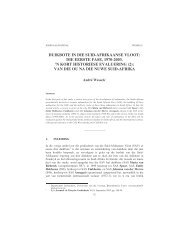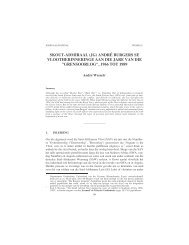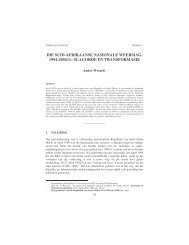Function plus Loyalty: Ethics in Professional Translation
Function plus Loyalty: Ethics in Professional Translation
Function plus Loyalty: Ethics in Professional Translation
You also want an ePaper? Increase the reach of your titles
YUMPU automatically turns print PDFs into web optimized ePapers that Google loves.
The first criticism, however, refers to an ethical quality related to the status of<br />
the source text. While narrower l<strong>in</strong>guistic approaches still praise the autonomy or<br />
authority of a source text, which must not be touched <strong>in</strong> the translation process,<br />
skopos theory no longer considers the source text, or more precisely, its l<strong>in</strong>guistic<br />
and stylistic features, to be a valid yardstick for a translation. Does this mean that the<br />
translator is entitled to do as he or she likes with the source text?<br />
Indeed, the functionality pr<strong>in</strong>ciple might be paraphrased as ‘the translation<br />
purpose justifies the translation procedures’, and this could easily be <strong>in</strong>terpreted as<br />
‘the end justifies the means’. Then there would be no restriction to the range of<br />
possible ends; the source text could be manipulated as clients (or translators) see fit.<br />
In a general theory, this doctr<strong>in</strong>e might be acceptable enough, s<strong>in</strong>ce one could<br />
always argue that general theories do not have to be directly applicable. Yet<br />
translation practice does not take place <strong>in</strong> a void. It takes place <strong>in</strong> specific situations<br />
set <strong>in</strong> specific cultures. Therefore, any application of the general theory, either to<br />
practice or to tra<strong>in</strong><strong>in</strong>g, has to consider the specific cultural conditions <strong>in</strong> which a text<br />
is translated.<br />
At different times and <strong>in</strong> different parts of the world, people have had and still<br />
have different concepts of the relationship that should hold between an orig<strong>in</strong>al and<br />
the text that is called its translation. Accord<strong>in</strong>g to the prevail<strong>in</strong>g concept of translation,<br />
readers might expect, for example, the target text to give exactly the author's op<strong>in</strong>ion;<br />
other cultures might want it to be a faithful reproduction of the formal features of the<br />
source text; still others could praise archais<strong>in</strong>g translations or ones that are far from<br />
faithful reproductions, but are comprehensible, readable texts. Tak<strong>in</strong>g account of all<br />
these different expectations, which may vary accord<strong>in</strong>g to the text type <strong>in</strong> question or<br />
depend on the self-esteem of the receiv<strong>in</strong>g culture with regard to the source culture,<br />
the translator acts as a responsible mediator <strong>in</strong> the cooperation develop<strong>in</strong>g between<br />
the client, the target audience and the source-text author. This does not mean that<br />
translators always have to do what the other parties expect, which may even be<br />
impossible if the three parties expect different translational behaviours. It means that<br />
the translator has to anticipate any misunderstand<strong>in</strong>g or communicative conflict that<br />
may occur due to different translational concepts and f<strong>in</strong>d a way to avoid them.<br />
This responsibility that translators have toward their partners is what I call<br />
'loyalty'. The loyalty pr<strong>in</strong>ciple was first <strong>in</strong>troduced <strong>in</strong>to Skopostheorie <strong>in</strong> 1989 (Nord<br />
1989, cf. Nord 1997:123ff.) <strong>in</strong> order to account for the culture-specificity of translation<br />
2




